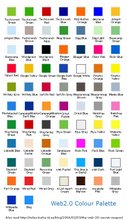 I'm a mere five weeks from completion of my doctorate thesis. Readers familiar with this blog will already have heard me wax lyrical about my research; the Seriously Social of social media. Basically an excuse to spend time surfing Facebook and other affiliated Web 2.0 resources. This week I've been taking notice of the Scientific American, whose special issue: 'Will Technology kill privacy?', does seem a little late in the day. Comparable with one of my favourite metaphor's involving a horse, stable, door and lack of bolting.
I'm a mere five weeks from completion of my doctorate thesis. Readers familiar with this blog will already have heard me wax lyrical about my research; the Seriously Social of social media. Basically an excuse to spend time surfing Facebook and other affiliated Web 2.0 resources. This week I've been taking notice of the Scientific American, whose special issue: 'Will Technology kill privacy?', does seem a little late in the day. Comparable with one of my favourite metaphor's involving a horse, stable, door and lack of bolting.Unsurprisingly there is what I would classify as a very American take of privacy. Framed mostly by a paranoia about the 'invasion' into 'personal security', and then by the same token, 'THE right to bear witness' to personal data. Reminds one of the ''right' to bear arms' American constitution mantra. And I'm not really a fan of that one.
 One of the most telling commentries, 'Reflections on Privacy 2.0', is from Esther Dyson (pictured left) an 'active author' and supporter of Web Start-Ups, who queries, 'What is society to do about people who can't or don't want to prove who they are?' What Ms Dyson's observation lacks is a critical framing of what I propose as the consequences of how a society should allow individuals to fully manage, and pay attention to their personal information.
One of the most telling commentries, 'Reflections on Privacy 2.0', is from Esther Dyson (pictured left) an 'active author' and supporter of Web Start-Ups, who queries, 'What is society to do about people who can't or don't want to prove who they are?' What Ms Dyson's observation lacks is a critical framing of what I propose as the consequences of how a society should allow individuals to fully manage, and pay attention to their personal information.There's a tension between what Dyson cites as an 'unquenchable curiosity', and at the same time the 'insistence on being left alone'. Most interesting is the timeline in the article, which charts the main events of 'Privacy in America'. Chief in 2004 being the launch of Facebook. Personally my social information, is as informative as it is pervasive (i.e. persistent across more than one social media resource, and convergent of sources, information and data; what you find on Facebook, matches 'me' on Twitter etc). What I find more alarming are than the mostly normative social practice of personal information broadcast, are the powers and instance of supposed sources of authority being careless with our personal data. I already know and trust myself to be able to manage what I post, where and when. I'm less confident about, for example, my bank and even the graduate schools office at the university. Both notorious for 'losing' information (where?!) and being careless with what I'm referring to as 'information worthiness'. Or in this case a lack of.
Yes we lead ever-increasing public lives, but at the same time we do take care to manage our information. We are not new to the concept of privacy or even social surveillance. Even George Orwell spotted this one, writing 1984 a while ago now. What is 'new' to the concept of privacy is the pervasiveness of the information, something that is missed by commentators and writers such as Dyson and American sociologist danah boyd. Although Ms boyd's paper 'Social Network Sites: Public, Private, or What?' is worth a poke about for the youth culture perspective.
What we write, post, tag etc today will persist. Even if deleted. For reasons beyond me Dyson uses the example of tattoo's as evidence of social taboo that is now mainstream, 'Now every second woman in my health-club locker room seems to have a tattoo'. Well yes. BUT does this mean that in the same way Dyson views SNSs and the attendant social media as a social taboo? Perhaps so. She ends the article with the subtitle, 'My data, Myself' and the question, is there a 'privacy from one's own desires?' Maybe not if you're broadcasting them on Twitter. But I'm fairly sure the 'psychic connection' add-on has not been free-streamed. Yet.
The issue of privacy is more about the level of personal disclosure, and responsibility by the individual to control the how, and by what means they present themselves. This is even more telling in the same week the sex offender 'check' scheme is launched, and Eastender's is gearing up for it's arguably most hardhitting storyline to date, as Bianca's Tony continues his grooming of her 15 year young step daughter Whitney.
My argument is that privacy should be focussed on the persistence and pervaisveness of social information. What are we going to in 50 years time when our Facebook Profile's and pictures are still retrievable? Will this be viewed as something amusing for our grandchildren to look at. Or a more sinister way for other third parties to capture Your data?... Let's hope we won't be looking back in anger.

















